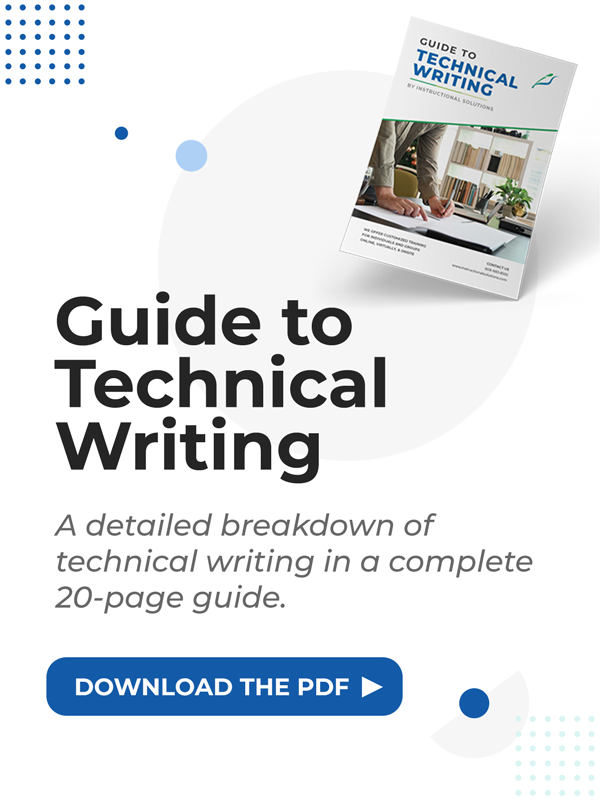How to Write a One-Page Proposal

Originally published September 7, 2021, updated May 10, 2024

Table of Contents
Proposals are an essential tool for winning new business. Writing a persuasive pitch summarizes the value of your offering, how you can resolve your client’s challenges, and reflects the relationship between your organizations. Proposals can range in size and format, but a form that is growing in popularity is the one-page proposal. This brief bid is useful when a client requires the entire solution at a glance. It can be used as an overview before proceeding to a more in-depth proposal, or it may be a stand-alone document that enables sign-off on new work.
Summarizing a proposal on one page is far more complicated than it sounds. This article will outline how to prepare for the one-pager, the critical sections to include, writing and formatting guidance, and a template to support your proposal development.
Don’t skimp on preparation
Many people confuse a short document with one that’s easy to write. However, it is difficult to include all the necessary information in just one page. Thoughtful preparation is required to ensure the proposal uses every word and square inch effectively.
Collecting and organizing ideas is the first step, and this process is made easier through the use of mind-mapping software. Mind-mapping allows a freeform collection of all the elements that should be considered in the proposal. Once the ideas are collected, they can be organized and prioritized. This process is valuable both when preparing it on your own or with a team. I recommend Mindmeister for its accessible interface and collaboration options. Mind-mapping will result in a clear outline of your proposal that will clarify the writing process.
The preparation process requires a keen understanding of your potential client. Review the various elements you’ve collected in your mindmap for their relevancy and interest to your client. For example, certain clients want a vision of their company after your work is complete. Others prefer to see only specific deliverables without any fluff. This audience analysis is a valuable filter to identify the information and sections that appeal to your customer.
Are you interested in improving your proposal writing skills? Check out our proposal writing course.
Structuring a one-page proposal
Each proposal must be unique to your client. The following elements are items that are typically included in a one-page proposal. However, this framework should be modified to include what is relevant to your audience.
Win more business with strong proposal writing skills.
Our Proposal Writing Course includes instructor feedback & coaching to review any proposal you write.
View Course & OutlineSelling starts with the title
Your proposal title should be a persuasive summary of an already short document. If you’re writing a one-page proposal, your audience is likely extremely busy. Your reader’s attention is in-demand, and the proposal title’s job is to pique their interest about your offer.
The Why: Overview
The overview provides a summary of the proposal. This section should outline the objectives and strategy of the business deal, the products or services you will render, and how they will solve your client’s problems. A persuasive pitch identifies your value proposition and how your work will make your customer’s business more productive, efficient, or otherwise improved. This section should make it obvious to your client why they should say ‘yes!’
The What: Scope
Each proposal promises a new vision for your client. This vision should be compelling and engaging, but it must also be realistic. Outlining the scope sets a clear boundary of what the client can expect within the contract.
This section may also lay out the roles and responsibilities of your company and your clients. The proposal may be contingent on receiving access to data, platforms, or personnel to enable the project.
The How: Deliverables
What will your client receive in exchange for their agreement? Items may be tangible products or intangible services. Product deliverables are typically straightforward to outline. Service deliverables can be more challenging to define. Therefore, it is even more important to clearly and succinctly describe services to avoid any confusion on contract fulfillment. For example, in a social media proposal, the number of posts or level of engagement could define a deliverable. In a safety training proposal, the number of students trained or the production of a tailored training manual could be the metrics.
The When: Timeline
Clarity on timing is essential to meet client needs and to ensure your ability to deliver. The timeline can be framed relative to contract signing, set by specific dates, or in phases based on client approval. Any format can be acceptable, so long as it’s specified. If appropriate, this section may be integrated with the deliverables.
The How Much: Financials
Financials are the heart of any proposal. Clients want to know exactly what this offer will cost. Budgets can be presented in a diversity of formats, so choose one appropriate for your client and industry.
Some writers see one-page proposals as an opportunity to simplify the budget as a lump-sum amount. However, customers can balk at a sizeable total because they do not know the value of all individual elements — balance brevity with transparency in preparing this critical section.
The Fine Print: Contract
This section should explain how to accept the proposal. It may indicate how to request a more in-depth proposal or include an area to sign with approval. In addition, it should include any key legal or taxation information.
One-page proposals often require assumptions to maintain conciseness. These assumptions could cover access, the current status of the client’s business, your subcontractor availability, or any other item. Identifying these assumptions in this section enables these items to be reviewed and accepted by your client.
The Who: Contact
One-page proposals are typically provided to customers familiar with your company and therefore do not need an extensive company introduction. This section should include your client’s contact person, contact information, and a brief company overview or website link.
In any proposal, the ‘About Us’ section should take a back-seat because the core of the proposal is about the client, not yourself. Company information is relevant but should be brief. For example, direct links to your corporate website that includes a strong portfolio and compelling testimonials does not use valuable real estate and is always available.
Writing a one-page proposal
Once your mind-mapping has produced a clear structure and outline, the writing process should be relatively straightforward. In a one-page proposal, there is no room for fluff. The content must be included in a way that is both convincing and concise.
Business writers often find it more challenging to write brief documents compared to more extensive reports. The constraints of one page require each phrase to be carefully thought through, and each sentence to be actively supporting the pitch. It is easy to write a convincing document if all the information you could possibly want to include is included. Brevity is an art and a powerful one.
If your text continues beyond one page, review each section for content that is duplicative or extraneous. Look for opportunities to combine similar concepts into a singular sentence with more powerful phrasing. A helpful editing technique is to leave the document for a few hours or a day, and then read it from your client’s perspective. This fresh angle can quickly identify passages that need revision or deletion.
Formatting is your friend
Formatting is vital for an aesthetically pleasing one-page proposal. These documents include a lot of information, and careful formatting allows the reader to absorb it quickly.
For an accessible one-pager, consider these formatting tips:
- Use whitespace to separate sections, avoid the page from feeling busy, and guide the reader’s eye through the document.
- Use two or three columns in some areas to present relevant information in parallel.
- Graphics, photos, or icons can support your proposal’s message while also breaking up blocks of text.
- Tables or charts can be used to summarize text and emphasize key points.
- Test that your proposal is truly on one page with a preview by printing or saving it as a PDF document.
One-page proposal template
The following template puts the structure and formatting together for a framework for a one-page proposal. Feel free to use and refine this template to build your bid and attract new business.
The Title: The Most Important Phrase
Objective
Summary of the proposal that will get a ‘yes!’ from your client. Make sure to include a clear, short statement of how you will uniquely solve the client's problems.
ScopeDefining what the proposal will cover.
Deliverables Timeline InvestmentDeliverable #1 Description Delivery Date #1 Budget Item #1
Deliverable #2 Description Delivery Date #2 Budget Item #2
Deliverable #3 Description Delivery Date #3 Budget Item #3
ContractGuidance on how to accept the contract and any assumptions or stipulations the client should consider.
We’re Here for You
Sales representatives name and direct contact information
A one-liner about your company and a link to the corporate website.
Win more business with strong proposal writing skills.
Our Proposal Writing Course includes instructor feedback & coaching to review any proposal you write.
View Course & Outline

